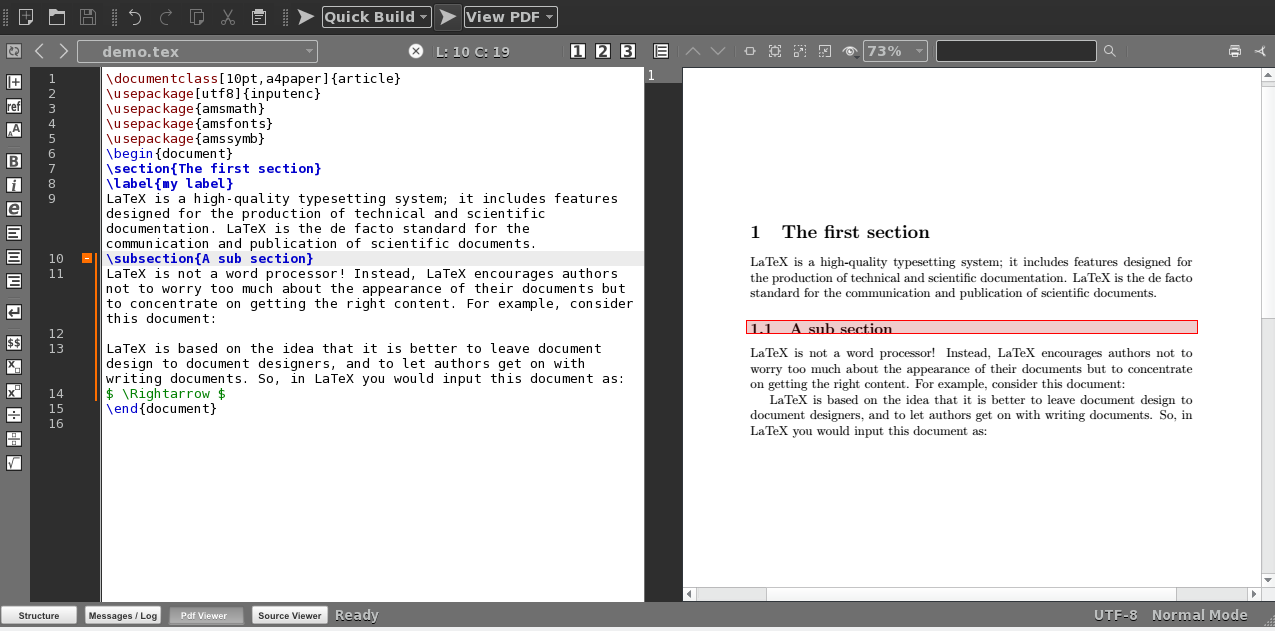

This allows you to specify what the “main file” is of your project so you don’t have to select it every time you want to compile your LaTeX project. One of the great things with LaTeX is the use of a “LaTeX Master File”. The LaTeX Master file: Compile a Project from any File There are a few options in the LaTeX bundle in TextMate to make pdfsync work with Skim, and an option in Skim to have it work with TextMate.ĭownload Skim here.
Texshop for windows pdf#
Skim is an alternative PDF viewer that was originally designed to effectively export PDF annotations. To get pdfsync working, which allows you to click between your rendered PDF file and the text file in which you’re editing that text, you should get Skim.

The project drawer is only one reason why TextMate is a strong editor for LaTeX. However, TextMate needs a little bit of modification to make it work with the ease of TeXShop. For this reason, I began to move to TextMate. TextMate has a nice drawer that lists the files in the project and therefore is easier to manage than multiple TeXShop windows. I began to write my thesis, and it involved many files in the project. I bought TextMate for myself a few years ago but haven’t really used it for LaTeX until recently. I am pretty sure that when you install MacTex, you get it by default, but if you don’t, you can get it here.
Texshop for windows for mac#
The complete package for Mac is located here: If you are looking to get up and running quickly, I highly recommend it.

It’s a pretty nifty editor – it has good support for common LaTeX templates, it allows you to click back and forth between the rendered PDF and the position in your document to edit, and it’s very clean and simple to use. TeXShop is a simple GUI that allows you to easily type and compile your LaTeX.įor a long time, I used TexShop as my main LaTeX editor for the Mac.
Texshop for windows mac os#
What I really wanted to talk about are a couple of options for LaTeX on Mac OS X. In this respect, it’s a little like HTML in that what you type into the screen doesn’t look like the final product – you need another program to make it look like the final result.Īnyway, this isn’t a LaTeX tutorial so to speak. LaTeX extensively uses templates to format your document so that you get a document that looks great no matter what you put into it. LaTeX works differently because you specify the behaviour and the appearance of the document in addition to the text. You add a paragraph and boom, suddenly your pictures are all off of the edge of your screen! Anyone who’s worked with Word for any amount of time though has encountered issues with formatting, especially when moving things around. You drag a figure into the right spot, you drag the margin to the right width, or you drag the paragraph into the correct location. That is, if you want to adjust something, you usually have to do it manually. The differences between the two, however, are in the way that you format the document. In this respect, it’s quite similar to Microsoft Word. It allows you to type stuff and then formats it all together for you into a nice pretty document, usually in PDF. First of all, what is LaTeX? LaTeX is a typesetting tool.


 0 kommentar(er)
0 kommentar(er)
